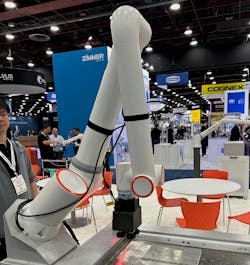North American robot orders flat in Q1 2025
Robot orders in North America remained essentially flat in the first quarter of 2025, according to the Association for Advancing Automation (A3).
Companies purchased 9,064 units valued at $580.7 million, a 0.4 percent increase in units ordered and a 15 percent rise in order value year over year.
The plastics and rubber sector saw 12 percent growth in units ordered and a 33 percent increase in order value. Most other non-automotive sectors experienced contraction relative to Q1 2024, including food and consumer goods, metals, and semiconductors.
“The first quarter data highlights a continued resilience in automation investment, particularly in the automotive sector, even as manufacturers navigate a complex macroeconomic environment,” said Alex Shikany, executive VP at A3. “At the same time, some sectors are taking a more cautious approach as broader economic uncertainty persists.”
A3 has now begun reporting collaborative robot (cobot) statistics as part of its official quarterly data — the first industry-wide dataset of its kind in North America.
In Q1 2025, North American companies ordered 1,052 collaborative robots valued at $39.2 million. Cobots accounted for 11.6 percent of all robots ordered and 6.8 percent of total revenue.
Cobot demand was strongest in industries prioritizing flexibility and safe human-machine collaboration, including life sciences/pharma/biomed, and food and consumer goods.
“Cobots are one of the fastest-growing areas of robotics adoption, and providing clear, reliable data on where they’re being used will help manufacturers, integrators, and suppliers make more informed decisions,” Shikany said.
As companies face pressures from labor shortages, reshoring strategies and digital transformation goals, robotics remains a key part of how manufacturers adapt and remain competitive, according to A3.

